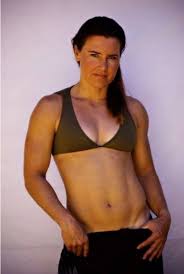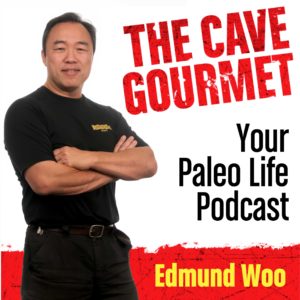EVA TWARDOKENS
A two-time Olympian in alpine skiing, 12-year veteran of the U.S. ski team, winner of six national championships, a world championship bronze medalist, a Masters weightlifting champion, and a U.S. Ski & Snowboard Hall of Famer, Eva Twardokens is now a sought-after coach and consultant in health and wellness.
2:30
Tell us a little about your background.
The first part of my life was all about skiing, as my parents were from Poland, and they really pushed me. I was on the U.S. ski team for 14 years, so I learned a lot from competing as an athlete at a world class level. In my personal training now, I have a feel for competition and training that I think is unique.
8:50
I didn’t realize that your mother was actually the person who created the paleo diet.
I think so, in a way she’s as close as you can come to who started that flame. My father and mother and Dr. Loren Cordain were best friends, and it started up at Lake Tahoe one summer. Loren Cordain was eating rice and beans and was like, “I can’t slim down,” and my mom sent my dad up with sardines and apple sauce. My dad was 20 years older and he looked and felt good and was performing well, and Loren didn’t know what the heck was going on so I think my parents really got him thinking.
11:30
Tell us about being there at the beginning of the CrossFit movement. You’re a CrossFit OG.
I’d retired from ski racing but I still had the itch to do something competitive and extreme. I met this guy Greg [Glassman, the Father of CrossFit], at my spin class who would do intervals and was also interested in nutrition with training. Eventually I tried training with Greg, and we did only a 30-minute workout where he taught me how to air squat and a lot of gymnastics stuff, making me adhere to perfect form on every rep. I loved the workout, I was hooked, I started training with Greg on a regular basis, and he wanted to teach the folks at the gym we were working out at. So he had me do power clean and jerk at 120 lbs. for 15 reps, and we didn’t have bumper plates—it was iron—and I think at 13 I dumped, it made a loud crash, and he got fired a few days later. I knew he would go on to do his own thing though, and he did.
16:20
Tell me about the Nasty Girls of CrossFit.
It’s a workout called Nasty Girls, and it’s 50 air squats, 7 muscle ups, and 10 power cleans at 95 lbs. (hang power cleans), 3 rounds for time. I did it with Annie Sakamoto and Nicole Carroll, so we are the original trainees of the workout, and Greg [Glassman and his wife] Lauren put the video up online and it went viral. I think that was the video that really got CrossFit on the map and exposed a lot of people to it.
https://www.youtube.com/watch?v=i0nPnElcqgU
17:30
What have you evolved to now?
After my competitive career, I was interested in furthering my knowledge in nutrition and training and I felt like me and my U.S. ski teammates would’ve done better if we had trained smarter. When I was training with Greg Glassman, I started to burn myself out—along with aging, and also my career as a skier—all those things together made me start to evaluate how I was feeling. CrossFit has taken me a lot of places in the fitness world but it can become a little addicting and it’s hard to monitor yourself when you’re competing against a gym full of folks. I wanted to bring awareness of that to people to show them that they should start matching their health to their workout volume and intensity.
20:40
I speak at Paleo f(x) each year and I tell everyone these days, everyone can train hard, but not everyone knows how to recover. I read a great quote today that says, “Successful athletes have systems. Non-successful athletes just have goals.” You have to plan before and after and all around your training.
22:30
How does this work into the idea of “Minimum Dose, Maximum Effort?”
MDME for short is a training model based on quantification and training the minimal amount and getting the maximum benefits. You want to look good, feel good, and perform well, but don’t wear yourself out. It takes quantification to really be able to do that, so in my training model when I take on clients, we use an HRV monitor to monitor their overall stress levels, so that person is given day-to-day specific work to be done based on their HRV. This requires that you’ve eaten well, slept well, and your stress levels are all aligned for you to make gains.
24:00
The HRV monitor is based on the autonomic nervous system, which essentially focuses on what your body does to help you survive. You can monitor your stress levels through heart rate variability. This is a very fundamental explanation but Joel Jamieson and BioForce HRV have made it very simple for people to use with fine-tuning their training responsibly.
27:00
You can train with me in person at one of my classes if you’re in the Santa Cruz area, or get in touch with me at evatstrengthandconditioning.com. If you work with me online you can train and have a program developed for you from anywhere in the world.
Podcast: Play in new window | Download



Recent Comments